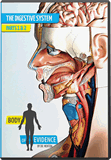Round-the-Clock Detox
Your body produces toxic chemicals all day every day. Not to worry. Your liver’s got it covered.
Hopefully, you are very careful about what you put into your body. Yet every day your body has to get rid of poisons. In fact, you can’t eat without producing poisons that should kill you. It sounds like a catch-22: don’t eat, and you starve to death; eat, and your body makes poisons that could kill you. How are you still walking around?
The answer lies in one of the most important organs God put in your body—your liver.
The liver is practically a chemical factory, which does hundreds of jobs that keep you alive. It makes bile and sends it to the intestines to help digest fats. It manufactures cholesterol for building the membranes of cells. It also makes most of the plasma proteins that float in the bloodstream and help blood to clot properly.
In addition to making molecules, the liver disposes of chemical messengers, called hormones, after they complete their tasks. Furthermore, it helps break down worn-out red blood cells. In addition, it regulates blood sugar and stores iron, as well as fats and vitamins, making them available to the rest of the body at a moment’s notice.
But one of the liver’s most amazing abilities is neutralizing poisons. The liver is the body’s great detoxifier. Many normal internal bodily processes produce toxic byproducts. For example, when your body burns proteins for energy, it breaks them down into their basic building blocks, amino acids. In the process of producing energy from these amino acids, the reaction also produces highly toxic ammonia as a byproduct. Liver cells convert this deadly ammonia into nontoxic urea, which can travel harmlessly to the kidneys to be excreted in urine.
The liver also protects you from the harmful side effects of helpful chemicals. For instance, after certain antibiotics finish battling bacteria, the liver needs to remove the excess from the body. Some mild pain relievers also produce nasty byproducts that need to be removed. (That’s just one reason to limit your dosage—too much of some medicines can overtax your liver.)
Not all toxins in our bloodstream are byproducts of metabolism or medicines. We consume some chemicals that are toxic even before our metabolism begins to break them down. One well-known example is alcohol. The liver limits the amount of damage alcohol can do to cells by breaking it down before it travels to the rest of the body. However, drinking too much can still overwork the liver and damage it permanently.
This three-pound master chemist near the bottom of your rib cage uses several specialized chemical processes to work its wizardry. Since chemical reactions can be complicated, the liver needs to intervene at multiple steps. Sometimes the chemical reactions that render poisons harmless need help getting started. Sometimes they don’t do the job fast enough on their own. So the liver produces enzymes to move things along—it can produce many different enzymes to catalyze each lifesaving reaction.
Not only does each reaction need the right enzyme, but each enzyme needs the right conditions to function properly. The temperature, the level of acids in the surrounding fluid, and the amount of oxygen are but a few of the things that have to be just right. Without these conditions, the enzymes won’t function properly or at all. So your liver constantly provides the right enzymes for the job—under just the right conditions—to keep your bloodstream clean and healthy.
Deactivating deadly poisons to keep you alive—it’s all in a day’s work for this marvelous example of the Creator’s meticulous design for the human body.
See for Yourself
Watch a liver enzyme called catalase break down the common household poison hydrogen peroxide into harmless oxygen and water.
Materials
- ¼ pound raw beef liver
- Knife
- Cutting board
- Blender
- Water
- Medicine dropper
- Large plate
- Hydrogen peroxide (a new bottle works best)
- Measuring teaspoon
- Two bowls
- Vinegar
- Baking soda
- A microwave-safe bowl with a cover
Procedure
On the cutting board, cut the liver into small cube-shaped pieces. Put in a blender with an equal volume of water. Blend on high speed until the liver is smooth, with no chunks.
Put one drop of blended liver onto a large plate. Add one drop of hydrogen peroxide. Note how quickly oxygen bubbles form. You are seeing the liver enzyme catalase break down the hydrogen peroxide.
Now try the experiment again under different conditions to see whether they make the reaction more or less efficient. To see the effect of an acid on the reaction, mix a teaspoon of blended liver with a teaspoon of vinegar (an acid). To see the effect of a base, use baking soda, and repeat the test. Did more bubbles form with the acid or the base?
Now heat a teaspoon of blended liver in the microwave for 20 seconds before adding hydrogen peroxide. What effect did heat have on the reaction? Under what circumstances did the most bubbles form? The fewest?
Related Videos
Body of Evidence Excerpt
Answers Magazine
January–February 2017
Secular scientists claim it’s easy to disprove the Bible’s 6,000-year history: just count the tree rings. But this dating method is not as reliable as you might think.
Browse Issue SubscribeRecommended Resources

Answers in Genesis is an apologetics ministry, dedicated to helping Christians defend their faith and proclaim the good news of Jesus Christ.
- Customer Service 800.778.3390
- © 2024 Answers in Genesis






